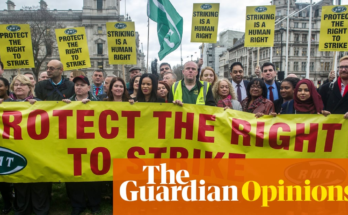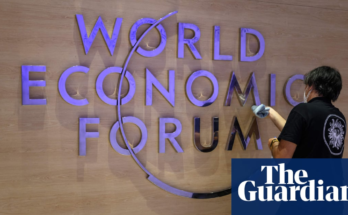The couple’s Oscars afterparty saw celebrities bypass Chateau Marmont workers who have complained of abhorrent conditions
Much of the energy that erupted after the murder of George Floyd seems to have been hijacked by a brand of “antiracism” overconcerned with microaggressions, with representation in film and media, and with interpersonal relationships. It’s a framework that largely ignores economic inequality, or the potential for strategic, organised struggle. Instead, the emphasis is placed on the insistence that if we just make white people nicer and encourage them to do better through a combination of demanding, begging or cajoling – all the while obsessively documenting a catalogue of personal privileges between individuals based purely on whether they are “white”, “black” or “brown” – that we are “doing the work”.
Ahistoric and devoid of class analysis, this brand of activism doesn’t have the tools to address the shitshow that recently took place at Jay-Z’s annual Oscars Gold party at the Chateau Marmont hotel.
Workers – many of them working-class black and brown Americans – at the ultra-exclusive Marmont have been protesting over abhorrent working conditions. The Hollywood Reporter has spoken with at least 30 workers who reported “long-simmering workplace issues, including allegations of systemic racial discrimination and sexual misconduct”. (In a statement, the hotel’s lawyers responded that: “Workplace issues are regularly raised, as at any business, and swiftly investigated and addressed,” and said employees have access to a whistleblower line to report any problems.)
The hotel’s owner, André Balazs, laid off most of his employees during the early stages of the pandemic, without providing severance packages or extended health insurance. The Unite Here Local 11 union has been loudly boycotting the hotel since 2021, accusing it of “disrespect, mistreatment and a racially stratified workplace”. Upon hearing of the forthcoming Oscars party, Unite Here made public appeals to Jay-Z to acknowledge the boycott. Despite the massed protesters outside the venue, and despite the picket line bristling with placards, the extravagant party went ahead.
Meanwhile, the newly dreadlocked (do pause to consider the hairstyle’s countercultural connotations) billionaire alongside his diamond-bedecked wife – the Queen, Beyoncé – has been increasingly speaking a language of #activism. The pair were feted for accepting a Brit award while posed in front of a portrait of Meghan Markle, Jay-Z has been declared rap’s “leading good Samaritan” for his support of the incarcerated celebrity rappers Meek Mill and 21 Savage, and Bey has supplied a stream of perfectly viral moments, from her rousingly “problack” Oscars performance to her Black Panther performance at the Super Bowl and last year’s “empowering” Black Is King visual album.
Yet all of this showy “representation”, packaging the energy of the Black Lives Matter movement in beautifully styled morsels, changes little. Especially when, confronted with the opportunity to support actual change, holding a party in lavish surroundings wins out. The Hollywood Reporter listed Janelle Monáe, Saweetie, Emily Ratajkowski, Kim Kardashian West, Micheal B Jordan and Zoë Kravitz among those who attended the event. While the picket line undertook the hard work of actual activism outside the party, the fun and games of those who “represent” us went ahead inside, untroubled by such inconvenient demands.
The contradiction of billionaire “activist” celebrities crossing a picket line was almost entirely ignored in the post-Oscars discussion. Instead, it was the “celebrity slap” that generated currency: the incident in which millionaire Hollywood actor Will Smith smacked the Oscars host, millionaire Hollywood comedian Chris Rock, for making an inappropriate joke about Will’s wife, millionaire Hollywood actor Jada Pinkett Smith. In a glaring indictment of our current priorities, commentators obsess over the foibles of the megarich while workers struggle to live.
Not only is representation not an instant remedy for racism, the Chateau Marmont incident itself, as well as the silence around it, remains a stark example of how “representation politics” can actually distract from truly emancipatory politics. It demonstrates that the “antiracist” world so often referenced since 2020 will not be achieved without class analysis, no matter how many black films Hollywood makes.
The episode also demonstrates how many people are more than happy to use the language of diversity, inclusion and antiracism – from A-listers to aspirant “influencer activists” – even if the effects end up serving not collective liberation, but personal ambition. As Symeon Brown writes in BlackLivesMatter Here’s My Ca$h App, a chapter of his new book Get Rich or Lie Trying: “Social media incentivises competition and disincentivises collectivism.” This is a politics of competition, not solidarity. Many influencer-activists purport to represent their online communities but it is the individuals themselves who are the primary beneficiaries rather than their followers, who are left with little more substantive than being “represented” or feeling “seen”.
But look beyond the activist-influencer matrix and it’s not all bad news. Away from the black squares, hashtags and manufactured outrage of online #activism, we have seen a return to grassroots labour organisation that has started to reap results. This week the Amazon workers of Staten Island voted through proposals – long opposed by founder Jeff Bezos – to form the US’s first Amazon workers’ union. With former Amazon employee Chris Smalls at the helm, they have against the odds managed to tap into a tradition of collective action to fight back against short breaks and high injury rates – something that will greatly benefit the largely minority ethnic workforce.
I wrote What White People Can Do Next (which is in many ways a critique of the limitations of liberal mainstream antiracism, disguised as a self-help book for white people) partly because I wanted to reconnect our current moment with the work of an earlier generation of activists who were not competing for likes, shares and “visibility”. Rather, they were part of a black radical tradition described by the scholar Cedric Robinson as emerging from a split in the black community. On one side, there were those with “a liberal, bourgeois consciousness … packed with capitalist ambitions and individualist intuitions”. Their objective was essentially to gain access to the roles and rewards monopolised by white people. On the other side, “There was a radical proletarian consciousness that sought to realise a higher moral standard than the ones embraced by whites and their black imitators.”
Where is our solidarity with the workers at Chateau Marmont? Why can’t a fraction of the attention that we reserve for celebrities be spared for the protesters? What I am certain of is that, in the words of Cedric Johnson, “Any movement that does not address economic inequality serves primarily as theatre, not strategy.” Robin Kelley, a professor of American history, has described the “rise of a black political class that serves as junior partners in forms of authoritarian governance”. A school of antiracism that holds up the visibility of these figures as evidence that things are “getting better” is part of the problem, not the solution.
{{topLeft}}
{{bottomLeft}}
{{topRight}}
{{bottomRight}}
{{/ticker}}
{{heading}}
{{#paragraphs}}
{{.}}
{{/paragraphs}}{{highlightedText}}
{{#choiceCards}}{{/choiceCards}}



